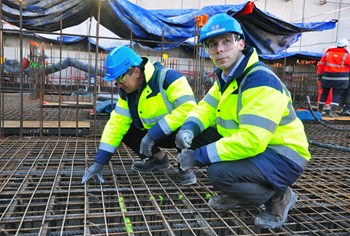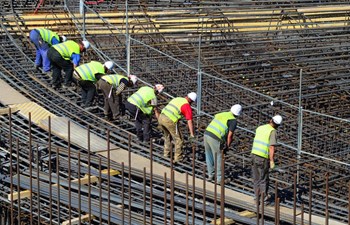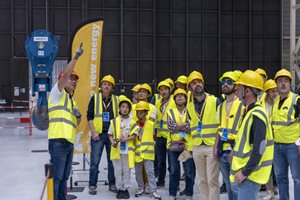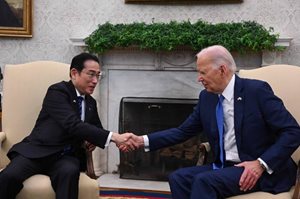
''Since construction activities began in 2010, F4E has signed contracts worth EUR 900 million for the creation of the ITER scientific facilities,'' says Laurent Schmieder, Site, Buildings and Power Supplies project manager (right) seen here with F4E Director Henrik Bindslev.

In the Tokamak Complex, contractors will begin in September on the walls of the lowest basement level and—by the end of the year—the next level. 600 workers are expected on site this year and 1,000 in 2015.
The platform will change dramatically. Work on the Site Services Building begins this month on the northeast corner of the platform. In July work will begin on Assembly Building—it's a relatively straightforward steel structure that will be completed within three months, but at 60 metres tall it will certainly be a noticeable change to the platform. Construction starting on the Cleaning Facility, the Radio Frequency Heating Building, the Control Building, the magnet power conversion and reactive power control buildings, and the cryoplant compressor buildings will also contribute to changing the platform profile. Building work on the cold basins and cooling towers kicks off in July.







